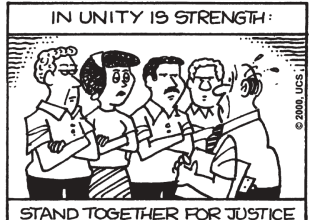A single worker is powerless to bargain with his employer for good wages and conditions. In the same way, a single voter can’t do much to influence the legislature.
Workers join unions so they can bargain as an organized group, and this pays off in better wages, working conditions, and job security. Likewise, unionized workers can organize their votes, which gives them the power to get laws passed that benefit workers and their families.









